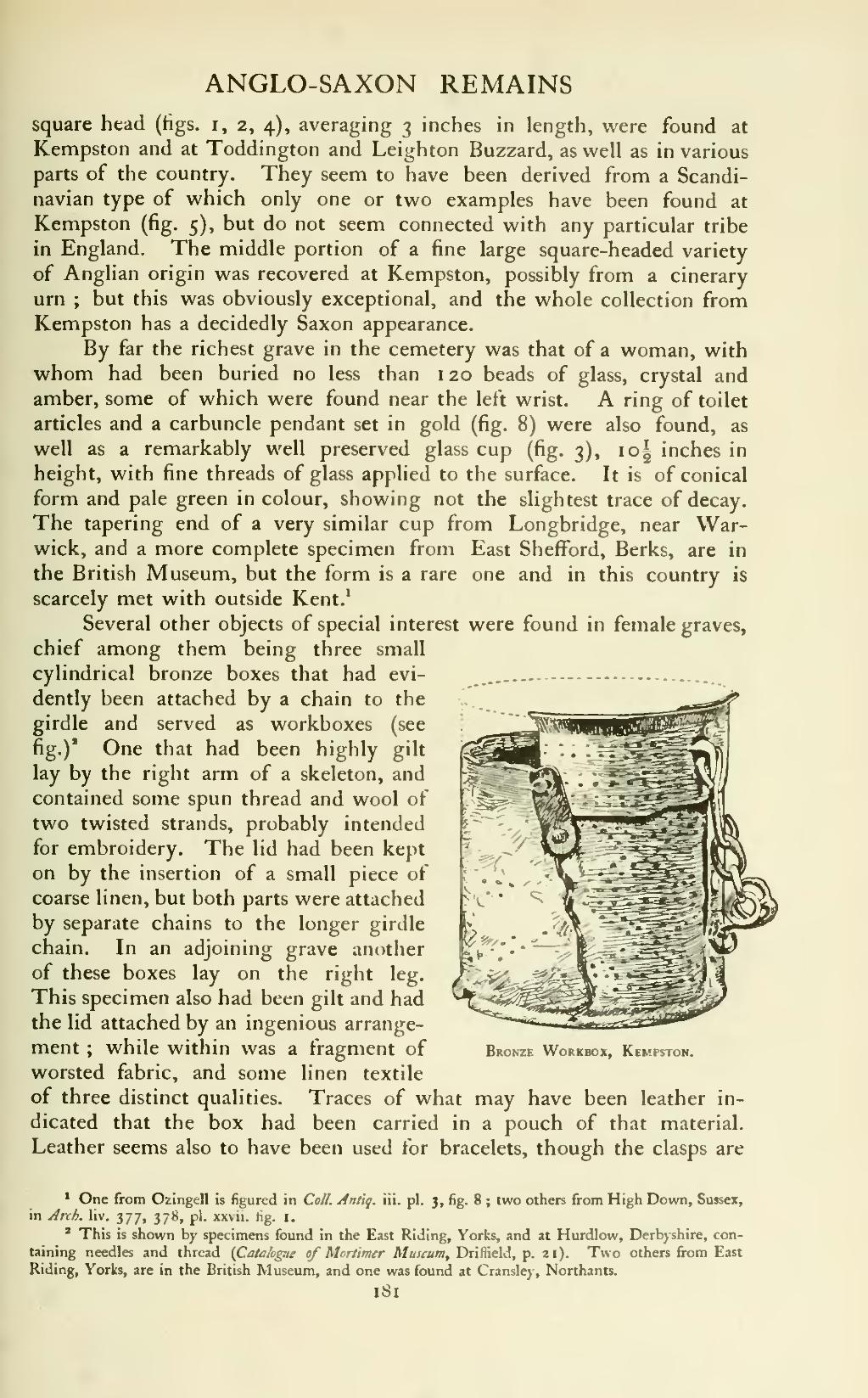ANGLO-SAXON REMAINS square head (rigs, i, 2, 4), averaging 3 inches in length, were found at Kempston and at Toddington and Leighton Buzzard, as well as in various parts of the country. They seem to have been derived from a Scandi- navian type of which only one or two examples have been found at Kempston (fig. 5), but do not seem connected with any particular tribe in England. The middle portion of a fine large square-headed variety of Anglian origin was recovered at Kempston, possibly from a cinerary urn ; but this was obviously exceptional, and the whole collection from Kempston has a decidedly Saxon appearance. By far the richest grave in the cemetery was that of a woman, with whom had been buried no less than 120 beads of glass, crystal and amber, some of which were found near the left wrist. A ring of toilet articles and a carbuncle pendant set in gold (fig. 8) were also found, as well as a remarkably well preserved glass cup (fig. 3), io| inches in height, with fine threads of glass applied to the surface. It is of conical form and pale green in colour, showing not the slightest trace of decay. The tapering end of a very similar cup from Longbridge, near War- wick, and a more complete specimen from East Shefford, Berks, are in the British Museum, but the form is a rare one and in this country is scarcely met with outside Kent. 1 Several other objects of special interest were found in female graves, chief among them being three small cylindrical bronze boxes that had evi- dently been attached by a chain to the girdle and served as workboxes (see fig.) 2 One that had been highly gilt lay by the right arm of a skeleton, and contained some spun thread and wool of two twisted strands, probably intended for embroidery. The lid had been kept on by the insertion of a small piece of coarse linen, but both parts were attached by separate chains to the longer girdle chain. In an adjoining grave another of these boxes lay on the right leg. This specimen also had been gilt and had the lid attached by an ingenious arrange- ment ; while within was a fragment of worsted fabric, and some linen textile of three distinct qualities. Traces of what may have been leather in- dicated that the box had been carried in a pouch of that material. Leather seems also to have been used for bracelets, though the clasps are 1 One from Ozingell is figured in Coll. Antiq. iii. pi. 3, fig. 8 ; two others from High Down, Sussex, in Arch. liv. 377, 37S, pi. xxvii. fig. 1. 3 This is shown by specimens found in the East Riding, Yorks, and at Hurdlow, Derbyshire, con- taining needles and thread {Catalogue of Mortimer Museum, Driflield, p. 21). Two others from East Riding, Yorks, are in the British Museum, and one was found at Cransley, Northants. 1S1
Page:VCH Bedfordshire 1.djvu/231
This page needs to be proofread.
